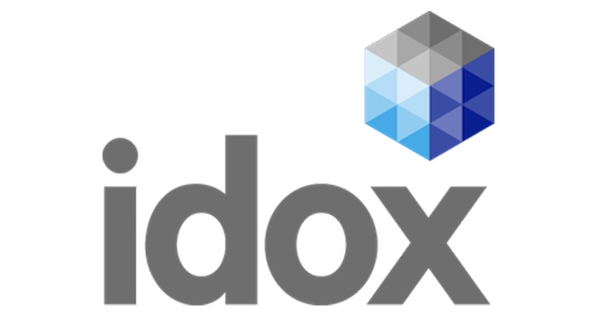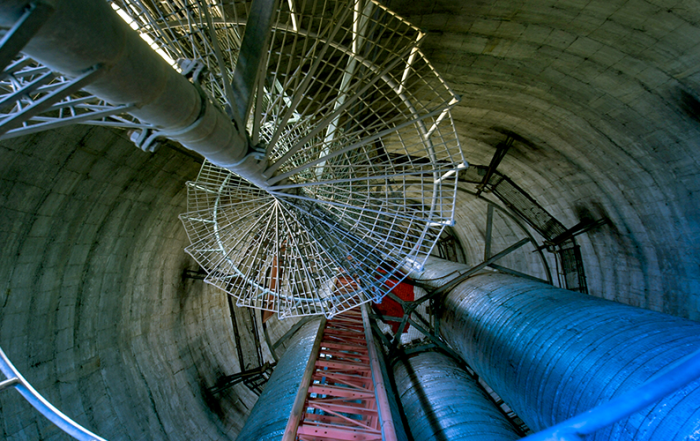Taking digital to the engineering sphere How can EPCs and Owner Operators accelerate tech transformation?
For many Owner Operators and EPCs, the drive to ‘go digital’ has been firmly in their sights for some time, but an uncertainty around how to kickstart the process – or what the next steps might be towards achieving digital maturity – have stalled progress.

Steven Bruce
Divisional Director
Here, Steven Bruce from Idox reviews the progress made to date by engineering companies, the challenges still being faced across the oil and gas (O&G) and energy and utilities sectors, and why a digital approach may be the key to leaner operating costs and improved asset management.
Getting to the heart of digital transformation
Digital transformation (DT) is now frequently recognised as an overused and sometimes misunderstood buzzword. But what does DT actually mean in practice for the industry? A number of well-respected industry sources help to explain the context and rising importance of the DT phenomenon. Industry analyst Gartner defines digital transformation as “the process of exploiting digital technologies and supporting capabilities to create a robust new digital business model.
Accenture’s Digital Performance Index analysis, based on a study of 343 leading global companies across eight industries, including oil and gas, reveals that most are capable of using digital technologies to create business efficiencies. Few, however, are exploiting them to substantially improve performance for the long run.
A Forrester report explains that “digital technology dramatically improves the economics and capabilities of every business. Using hardware, software, algorithms and the internet, is ten times cheaper and faster to engage customers, create offerings, harness partners, and operate your business.”
2020 predictions show enterprises will get ready for the digitised economy by accelerating investments in key technologies and new operating models to become hyperspeed, hyperscaled, and hyperconnected. IDC
Research aside, how can digital transformation translate to delivering benefits for engineering companies across the globe by accelerating processes, innovation and flexibility?
In the competitive oil and gas and energy and utilities sectors, keeping projects on time and to budget along with maximising operating efficiency are the top priorities. Transforming manual processes with digital automation could address some of the significant challenges faced by the sectors – data accuracy and quality, aging workforces, skills shortages, cost cutting – while continuing to comply with regulation and manage risks.
“Digital technology dramatically improves the economics and capabilities of every business. Using hardware, software, algorithms and the internet, is 10 times cheaper and faster to engage customers, create offerings, harness partners, and operate your business.”
“Digital technology dramatically improves the economics and capabilities of every business. Using hardware, software, algorithms and the internet, is 10 times cheaper and faster to engage customers, create offerings, harness partners, and operate your business.”

Where should my digital journey take me?
Before starting on a digital journey, it is important to understand what your intended destination is. Implementing any kind of change without a goal is akin to getting in your car without any real idea of where you want to go.
Digital transformation priorities can vary significantly by industry and by function. Take a step back from the detail and focus on the bigger picture – what objectives are you trying to achieve? Don’t forget the importance of considering the impact of any digital changes on existing legacy systems.
For digital transformation to be truly embedded across the industry, it should be guided by core principles that:
- Embrace digital at all levels – management, as well as the wider workforce, must be aligned and engaged
- Focus on the core of operations – where transformation and improvement will drive revenue and provide competitive advantage
- Maximise data and analytics – data is an asset and insight provides strategic advantage
- Promote agility – solutions should be flexible
- Avoid silos – an interconnected ecosystem simplifies collaboration and is key to driving efficiency savings
- Strive to empower people – technology should make jobs easier and faster
- Facilitate hyper-connectivity and awareness – remove barriers to getting work done anytime, anywhere
- Find a partner who recognises the value of digital transformation – support on your digital journey should not be underestimated
Going digital – the six Cs you need to know
With over 25 years’ industry experience, Idox has a portfolio of products centered on delivering robust and scalable engineering information management solutions and driving digital transformation. Together with our experienced product specialists, our technology helps companies worldwide to realise their digital strategies and goals for true business efficiency and benefits.
Six key areas that we’ve identified as being crucial to achieving this are as follows:
Digital by default – the road to greater efficiencies
Achieving digital transformation isn’t as easy as investing in tech and hoping that it generates efficiencies by itself. It takes technology, people and time to create a process that not only works, but works for your company. Here, we provide some realworld examples of how the six components of digital transformation outlined above have worked in practice.
Basin Electric Power Cooperative (Basin Electric)
A consumer-owned, not-for-profit generator and transmitter, Basin Electric, experienced similar success after turning to digital. Idox technology supported the transfer of more than one million documents, of which approximately 500,000 are active and in use.
As well as delivering a secure, flexible document management system for all project information, the Idox solution provided an easier way to share files across the team – irrespective of the native file format. This ensured that all colleagues have quick access to the latest version of a drawing, streamlining communication and driving collaboration. Idox also worked with the team to configure a solution that
suited individual document lifecycles and workflows, with configurable access controls to ensure the privacy of certain documentation.
“The time saving is huge. We can generate drawings and process them a lot quicker compared to standing by a printer and duplicating them manually. Our review process is also swifter, projects stay on schedule and submittals can be handled electronically.” Clint Wald, Basin Electric.
Canadian Natural Resources (CNRL)
CNRL – one of the largest independent crude oil and natural gas producers in the world – enlisted Idox to build an interconnected ecosystem where plant maintenance, engineering document management and consumer portals all functioned from a single digital solution.
The solution makes finding the correct specifications and procedures more efficient, removing the need for lengthy searches due to there being duplicate versions of the same document. The instances of colleagues having to repeat tasks due to data errors are now significantly lower. Idox’s solution provides the 2,000 users at CNRL with confidence that their work orders contain only the most up-to-date versions of documents.
“Idox provides the workforce at Horizon the comfort and peace of mind with knowing that the document that is in the work order is the current, most up to date version.” Richard Dyson, CNRL.
Wood
Independent services provider to the oil, gas and chemical industries, Wood transformed its paper-based processes, allowing the company to manage the data flow for thousands of drawings across a globally-connected network.
The solution has enabled Wood to manage huge volumes of data and correspondence in
a coordinated, secure and efficient manner. With a reliable digital approach in place, the company now has the tools needed to minimise errors and delays, implement effective chains of communication and ensure regulatory compliance by maintaining complete audit trails.
“The Idox team has been a real asset in providing information to assist in configuring the software to meet Wood’s varied project requirements. Made up of consultants and field applications engineers with background in our industry, they understand the real world.”
Stephen Kersch, Wood.
The business case for embracing digital is undisputed. Smart technology can offer engineering companies a more productive workforce – it can be the driver behind connecting people with systems, reducing silos and encouraging more efficient document sharing from multiple devices, anytime, anywhere. Efficiencies are there to be grasped – the sector just needs to be ready and willing to welcome change before they can truly maximise the value of tech, now and in the years to come.




